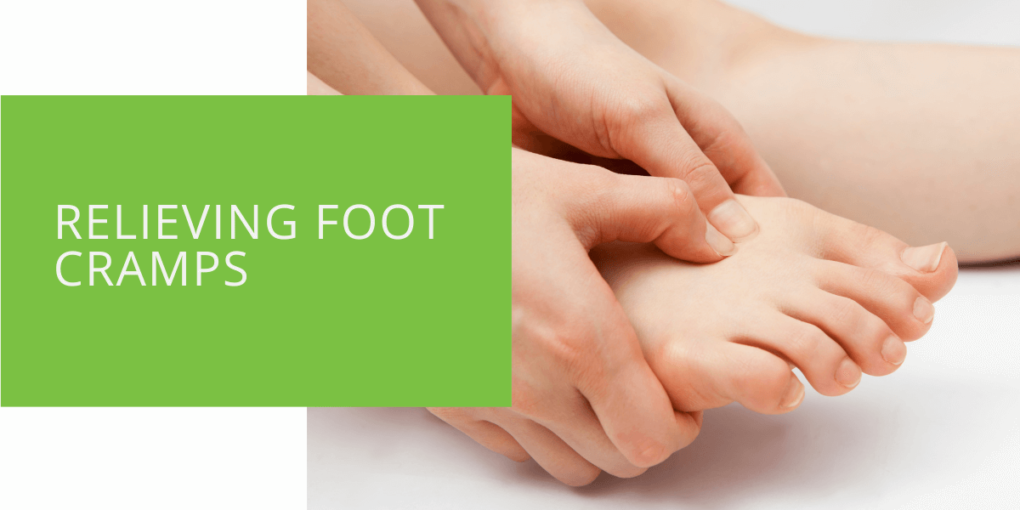Relieving Foot Cramps: A Step-by-Step Guide
If you've ever experienced a foot cramp, you know how painful and debilitating it can be. Foot cramps, also known as muscle cramps, are involuntary contractions or spasms of the muscles in the foot. They can range in intensity from mild to severe and last from a few seconds to several minutes. Foot cramps can occur for a variety of reasons and can affect people of all ages. This article will explore the causes of foot cramps and provide a step-by-step guide on relieving them. We'll also discuss strategies for preventing future foot cramps so that you can avoid this uncomfortable and inconvenient condition.
What Are Foot Cramps and What Causes Them?
Foot cramps are involuntary contractions or spasms of the muscles in the foot. Various factors, including muscle fatigue, dehydration, and deficiency in certain minerals such as potassium and magnesium, can cause them. Other potential causes of foot cramps include certain medical conditions (e.g., nerve damage, poor circulation), certain medications, and even certain types of footwear.
One common cause of foot cramps is muscle fatigue. If you've been standing or exercising for an extended period, your foot muscles may become fatigued and cramp. Dehydration is another common cause of foot cramps. When dehydrated, your body doesn't have enough water to function properly, leading to muscle cramps. Deficiency in certain minerals, such as potassium and magnesium, can also cause foot cramps. These minerals, known as electrolytes, are important for proper muscle function. If your body doesn't have enough electrolytes, it can lead to muscle cramps.

How to Relieve Foot Cramps in The Moment
If you're experiencing a foot cramp, there are a few simple steps you can take to help relieve it:
- Stretch the affected muscle: Gently stretch the muscle that is cramping. For example, if the cramp is in your calf muscle, you can try placing your hands against a wall and gently leaning forward, keeping your heel on the ground. If the cramp is in your foot, you can try gently massaging the muscle and flexing your foot.
- Massage the muscle: Massaging the muscle can help relax and reduce the cramp's intensity. Use your fingers to gently massage the muscle or a massage tool such as a foam roller or tennis ball.
- Use heat or cold therapy: Applying heat or cold to the affected muscle can help to reduce the cramp. If you choose to heat, you can use a heating pad, warm bath, or shower. If you prefer cold therapy, use an ice pack or a bag of frozen vegetables wrapped in a towel.
- Take an over-the-counter pain reliever: If the cramp is particularly intense, you may find relief by taking an over-the-counter pain reliever such as acetaminophen or ibuprofen. Be sure to follow the dosage instructions on the label.

Preventing Future Foot Cramps
While it may not always be possible to prevent foot cramps, there are a few things you can do to help reduce your risk:
- Stay hydrated: Drinking plenty of water can help to prevent foot cramps caused by dehydration. Aim to drink at least eight 8-ounce glasses of water per day or more if you are physically active or live in a hot, humid climate.
- Eat a balanced diet: Ensuring you get enough of certain minerals, such as potassium and magnesium, can help prevent foot cramps. Potassium-rich foods include bananas, avocados, and sweet potatoes, while magnesium-rich foods include nuts, seeds, and leafy green vegetables.
- Keep your muscles strong and flexible: Regular exercise can help to prevent foot cramps by keeping your muscles strong and flexible. Stretching, strength training, and low-impact exercises such as swimming and biking can all be beneficial.
- Wear comfortable shoes: Wearing shoes that fit well and provide proper support can help to prevent foot cramps. Avoid shoes that are too tight or loose, and choose shoes with a comfortable, cushioned sole.
Conclusion
Foot cramps can be frustrating and painful, but with the right strategies, you can relieve them at the moment and prevent future cramps from occurring. By staying hydrated, eating a balanced diet, exercising regularly, and wearing comfortable shoes, you can help to keep your foot muscles strong and healthy. If you experience frequent or severe foot cramps, it may be worth speaking with a podiatrist to rule out any underlying medical conditions. With the right treatment and prevention measures, you can keep foot cramps at bay and stay on your feet pain-free.

